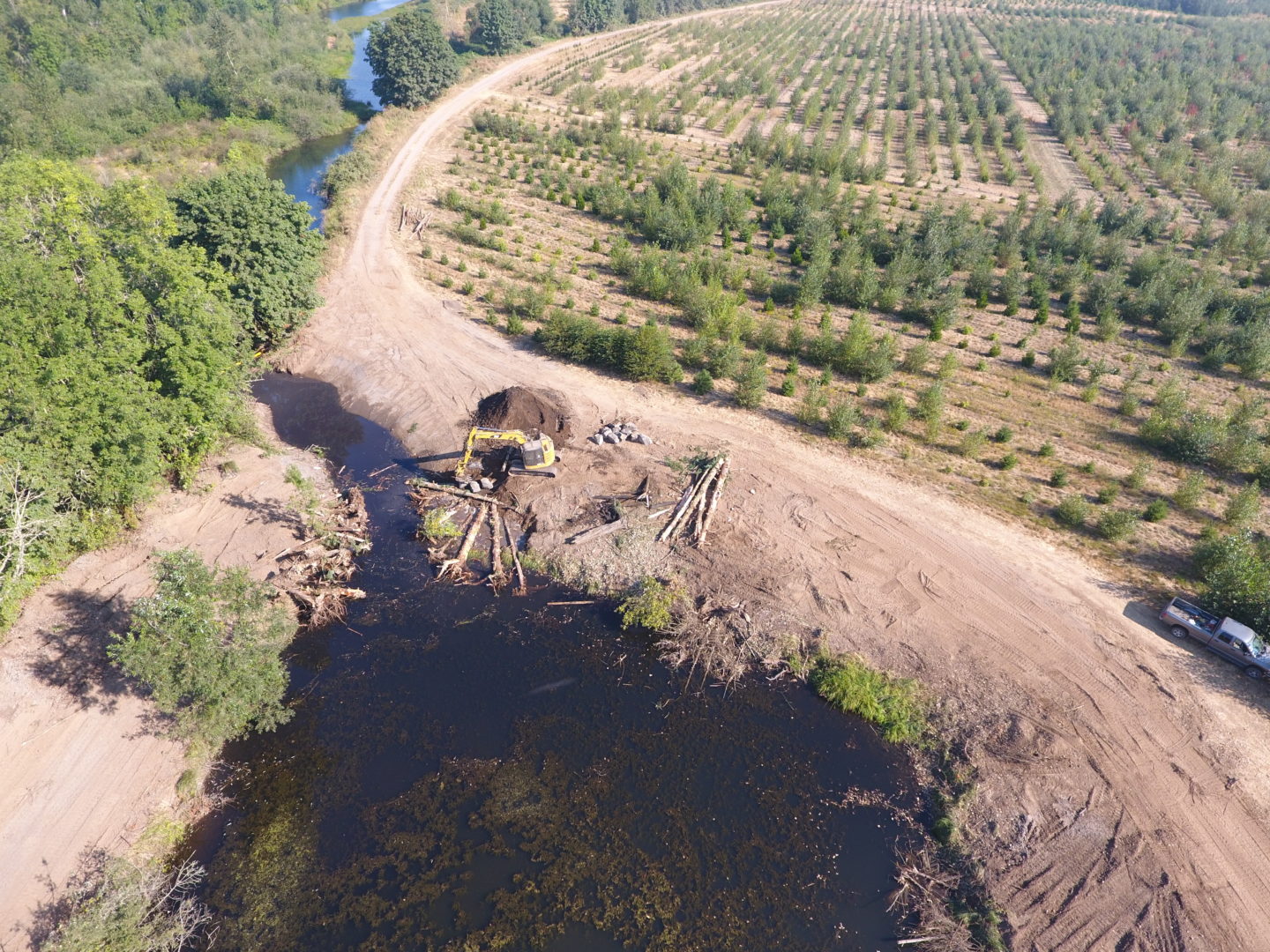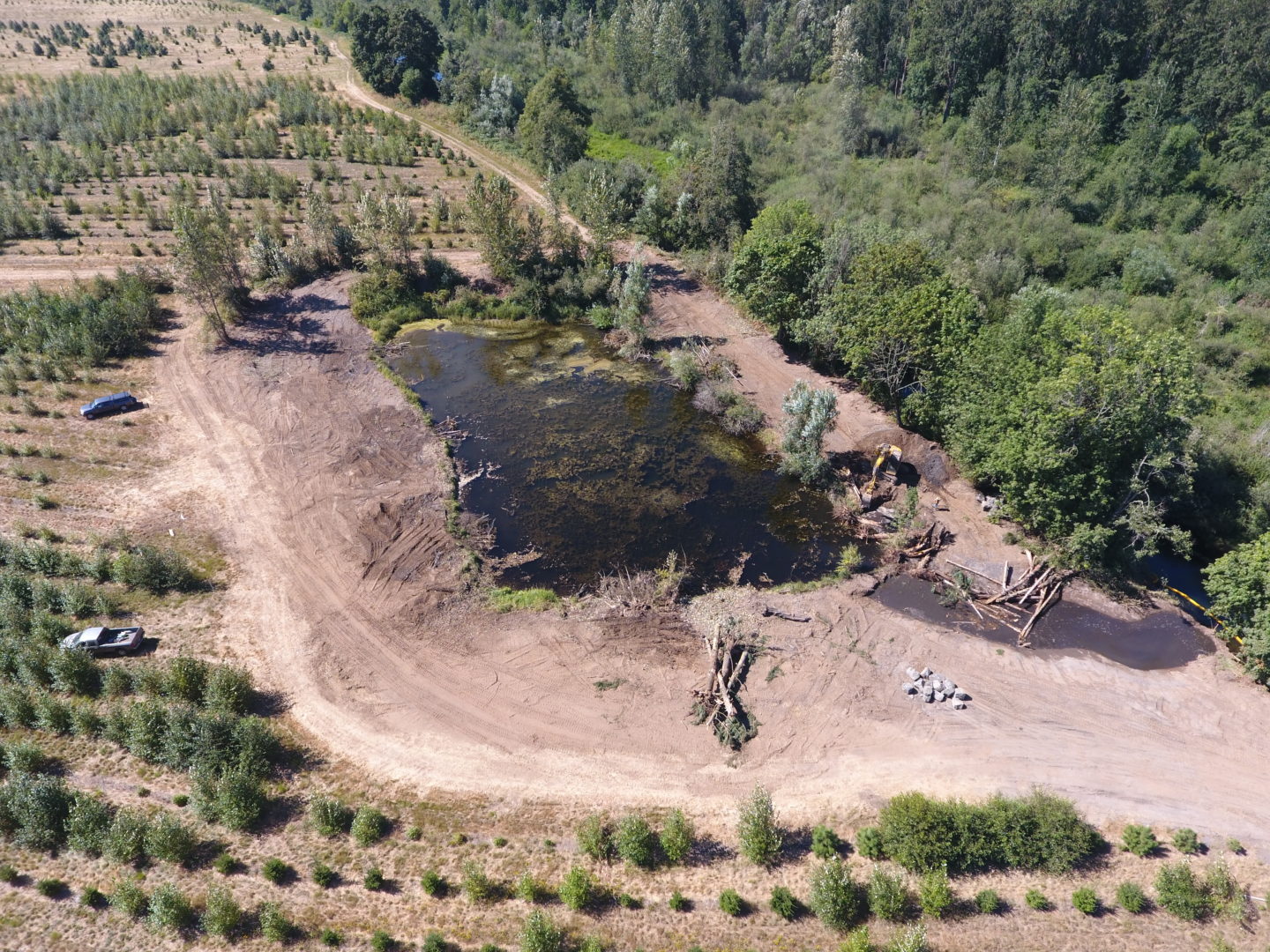
The McKenzie River Trust acquired 865 acres of Green Island in 2003, recognizing that such extensive acreage, river channels, and off-channel areas provided tremendous opportunities to implement conservation strategies that had been developed by many partner organizations working in the Upper Willamette Basin.

Transforming a pond, restoring a river
With the support of the Oregon Watershed Enhancement Board, Bonneville Power Administration, and a Pacific General Electric Habitat Support grant administered through The Nature Conservancy, we took one more step this summer to increase river-floodplain hydrologic connection and improve habitat quality.
Contractors used heavy equipment to remove a 350 foot by 150 foot levee, originally constructed to make the land more suitable to farming. An existing pond wall was opened, transforming the pond into an alcove that should connect to the floodplain in high water, spreading the river over about 3 acres that was previously inaccessible.
The next step will be to stabilize the site with native grass seedlings. Later this winter, we’ll plant cottonwoods and willows to restore the site.
As the noise of the bulldozers fade, and the calls of birds can be heard again, a conversation will continue: a conversation between the land and the rivers that cradle it.
Come see it for yourself
Want to learn more about restoration efforts on Green Island? Join us for the upcoming tour on August 26th with Christer LaBrecque, MRT’s Restoration Projects Manager, to see first-hand how Green Island is being restored! Register HERE.

